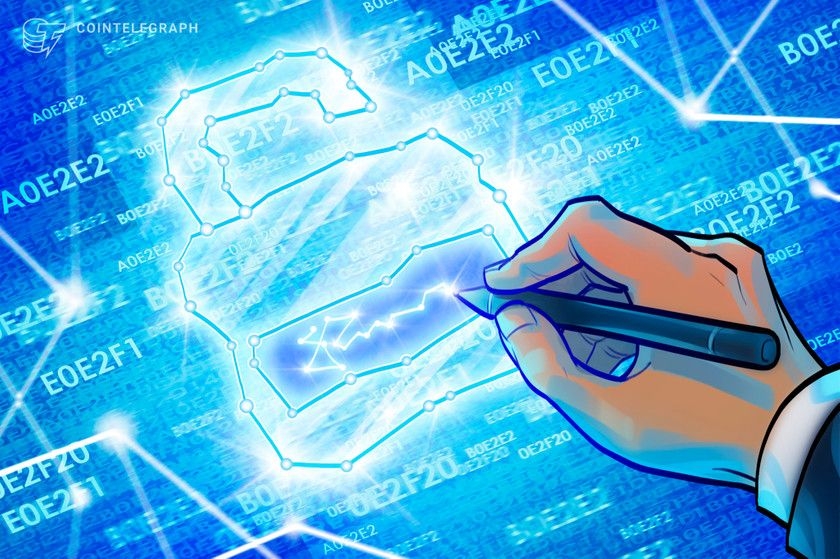What is digital ownership?
“Digital ownership” describes the legal rights and authority a person or organization has over a digital asset or piece of property.
Ownership is typically connected to tangible goods like real estate, construction projects and cars. However, ownership of digital assets has become more significant as the internet and digital economy have grown.
Under existing rules and regulations, digital ownership includes the freedom to use, give away, sell or alter the digital asset as the owner sees fit. Blockchain technology opens up new possibilities for secure and decentralized digital ownership due to the growing digitization of many assets, such as art, music, video games and financial instruments.
Blockchain technology allows people to own and control their digital assets without intermediaries like banks or governmental organizations. Democratizing ownership could open new avenues for value production and trade in the digital economy.
How does digital ownership work?
For people and organizations to properly own and govern their digital assets in a decentralized and secure manner, digital ownership uses digital tools and technology to produce a safe and transparent record of ownership and transfer of digital assets.
Digital technologies like blockchain, smart contracts and digital signatures generate and manage a record of digital assets and when they are transferred. Blockchain technology is beneficial for digital ownership because it provides a secure and decentralized ledger of transactions that can be used to record ownership and transfer of Web3 digital assets. Each transaction that is validated and stored on the blockchain provides a transparent and impenetrable record of ownership.
Another technology that can be utilized for digital ownership is smart contracts, which autonomously enforce the terms of an agreement between two parties. These contracts can be used to control who owns what digital assets and how they are transferred, offering a safe and open method of asset exchange without the need for intermediaries.
Digital signatures can also prove asset ownership. A digital signature is a mathematical method for confirming the legitimacy of a digital message or document. This can be applied to demonstrate proof of control over and ownership of digital assets.
How is blockchain making fractional ownership of assets a reality?
Blockchain technology enables fractional ownership of assets due to its secure and transparent method of dividing ownership of digital property or other assets into smaller parts.
Traditionally, only individuals with sufficient funds to purchase the entire asset have the means to hold assets like real estate or art. This has made it difficult for many people who might not have the money to buy an asset outright but would like to own a portion. So, how does blockchain ensure ownership of digital assets?
Assets can be divided into digital tokens using blockchain technology, with each token denoting a particular portion of the asset. In blockchain-based systems, these tokens can be purchased and traded, enabling fractional ownership of the underlying asset.
For fractional ownership, blockchain technology offers several advantages, including:
- Transparency: Blockchain technology allows users to trace who owns particular tokens by providing an immutable and transparent record of ownership.
- Security: Blockchain technology offers a safe method of transferring ownership of assets, ensuring the transactions are unchangeable and untouchable.
- Liquidity: More liquidity is made possible by fractional ownership via blockchain technology, allowing for simplified buying and selling of the tokens representing the asset.
- Accessibility: Blockchain technology allows people to invest in assets formerly out of their price range or subject to other restrictions.
How do NFTs prove ownership?
Nonfungible tokens (NFTs) prove ownership by creating a unique digital certificate for a specific asset.
A decentralized digital ledger that keeps track of all nonfungible token transactions and ownership changes is used to create each NFT. When generated, an NFT has a unique digital signature, signifying the ownership of the asset it stands for.
This signature is recorded on the blockchain with all the information about the asset and the transaction. Since the blockchain is decentralized and offers immutability, it provides a secure and transparent record of ownership that cannot be altered or deleted.
Once an NFT is minted, it can be transferred from one owner to another through a safe and transparent mechanism. Similar to changing ownership of tangible assets, this procedure is digitally recorded on the blockchain.
Related: Nonfungible tokens: How to get started using NFTs
Each NFT is distinct and has a distinctive digital signature, making it possible to establish ownership of a particular item. For instance, if a creator makes an NFT for a piece of digital art they have produced, the nonfungible token can be used to demonstrate that the creator of the NFT is the rightful owner of the piece of art.
What is the future of digital ownership?
The future of digital ownership is likely to be influenced by many factors, including technological advancements, changing consumer behavior and regulatory frameworks.
New ownership models and asset classes will probably emerge due to the continuous development of blockchain technology. As NFTs gain popularity, they might eventually be used for various digital assets, including video games, virtual homes and music.
Also, users can easily transfer ownership of digital assets between various platforms and ecosystems thanks to interoperability standards for digital assets and ownership systems. This could help to create a more unified digital ownership landscape.
The number of digital asset marketplaces will likely increase as more people start owning digital assets. These marketplaces will allow anyone to exchange, buy and sell digital assets in a safe and open environment.
Related: A beginner’s guide on the legal risks and issues around NFTs
Regulatory scrutiny will probably rise with the increased adoption of digital assets. Governments and regulatory organizations may create digital ownership frameworks that aid in consumer protection and clearly define ownership rights.
Source : [How blockchain technology revolutionizes digital ownership?](cointelegraph.com/explained/how-blockchain-technology-revolutionizes-digital-ownership) by Cointelegraph By Jagjit Singh - Cointelegraph by Cointelegraph By Jagjit Singh / March 12, 2023
